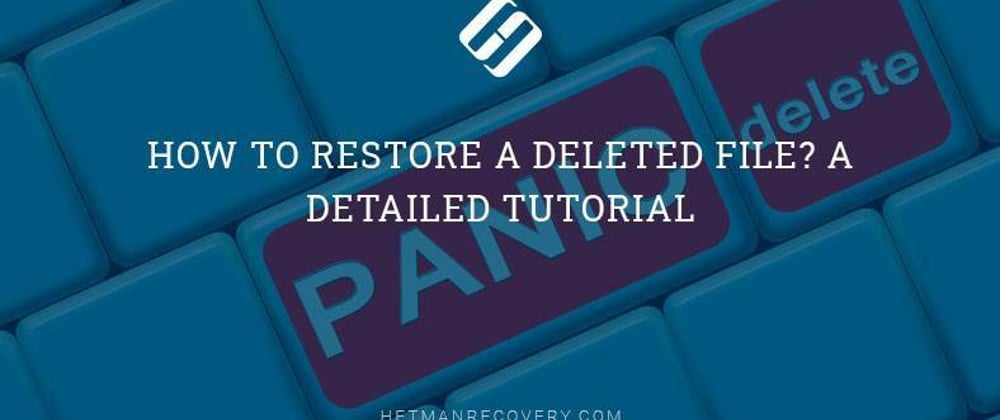Read this article to learn how to restore a deleted file in Windows, when it is possible, how to find missing files or restore them from a backup and more. I will tell you when a missing file can be recovered and how to do it.
Previously, I have already reviewed tools to restore deleted files, but this time I tried to cover the topic in a more comprehensive way. We will consider all important aspects you need to know for successful file recovery.
Is your file really deleted?
If you are not sure you have really deleted a file, try to find it first. Search for the file in the File Explorer. You may have moved the file to another directory and that is why you can’t see it now.
Make sure to check the Recycle Bin. You can look for anything in the Recycle Bin, using the search field in the top right corner of the window. The search feature can be very helpful, especially if you haven’t emptied the Recycle Bin for a long time and it’s full of files.
You can also right-click in the Recycle Bin window, and then select Sort by – Date deleted to view recently deleted files first.
The most important thing to check is to make sure that in the menu Recycle Bin Properties, there is no selection for Don’t move files to the Recycle Bin. Remove files immediately when deleted. Otherwise, your Recycle Bin will always be empty.
Note. There are third-party tools like CCleaner, which have the default setting enabled to empty the Recycle Bin at startup. That is why having CCleaner (or a similar app) run in the background automatically may prevent you from quickly restoring files from the Recycle Bin. However, in CCleaner and other apps of the kind you can always disable the option of emptying the Recycle Bin at startup. So keep that in mind unless you want to have that bin emptied automatically all the time.
If your file was saved to a cloud storage service like Dropbox, Google Drive or OneDrive, sign in to your account with such service and check your deleted files – the file you are looking for may still be available for recovery.
Check your backups
You should back up your important files regularly to avoid losing critical data if anything happens to your digital information. If you have a backup, it’s just the right time to check it for the file you think is missing. If you don’t have any backups yet, it’s high time you create one. Your Windows operating system offers effective integrated tools for backing up data.
For example, the File History tool is good for quickly recovering deleted files from their older versions, but it is disabled by default. You should enable it and configure the folder where you want to save files.
Hard disks and flash drives
If you did everything I have described above but couldn’t restore the deleted file you need, the only option left is to use data recovery software. However, there’s a piece of bad news for you: for some computers, this trick won’t work.
The matter is that conventional magnetic hard disks and solid state drives are based on different principles, and work accordingly. As soon as you delete a file from a magnetic hard disk, the actual data is not removed immediately – instead, only certain indicators pointing to such data are deleted. The operating system understands that the disk space where this data used to be is now free for writing new data. That is why the hard disk can be scanned for deleted files which are still there and can be restored as long as they have not been overwritten.
On the contrary, when a file is removed from a solid-state drive, it is deleted immediately wit the the special command TRIM to free up disk space and ensure new data can be written there. It means that you won’t be able to restore data deleted from solid-state drives – as soon as the files are removed, they are gone. Older solid-state drives and older operating systems like Windows Vista don’t support the TRIM command, while newer SSDs and modern operating systems such as Windows 7 – 10 work perfectly with TRIM.
The safest way to restore a deleted file
If you removed a file from a conventional magnetic hard disk, the best solution would be to turn off the computer immediately. If you keep on using it, there are always chances that the data of the deleted file may get overwritten. Even if you try to install a data recovery tool, the installer may write new data over the data of the file which has just bee removed.
When the computer is off, boot it from a recovery drive or a USB drive, or take out the hard disk out of the system case and connect it to another computer as an external drive. The most important part of all that is to prevent any data from being written to such disk. Use a data recovery tool to scan the disk and hopefully, you will find the deleted file. If you deleted the file only recently and didn’t write anything to that disk, you have good chances of restoring it. If you deleted the file some time ago, and you kept on working with the disk all that time, the chances for successful recovery are reduced considerably.
















Top comments (0)